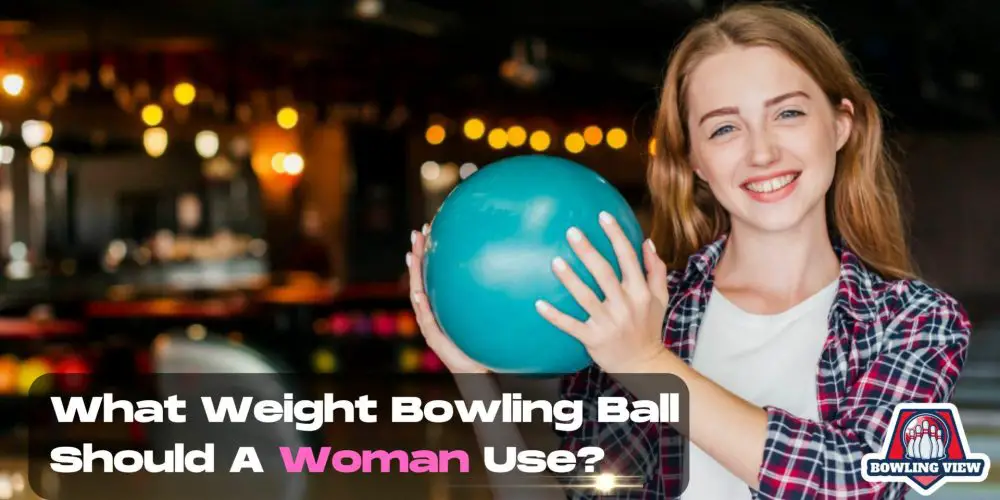Bowling is a fun and engaging sport that attracts people of all ages and skill levels. One crucial aspect of the game is finding the right equipment to enhance an individual’s performance, particularly when it comes to selecting a bowling ball.
For women interested in participating in this exciting sport or seeking to improve their game, identifying the ideal ball weight is essential.
Various factors come into play when determining the suitable weight for a woman’s bowling ball, including physical strength, style of play, and personal preferences.
Generally, women tend to use lighter bowling balls compared to their male counterparts. However, there is no one-size-fits-all solution; the perfect weight will vary from person to person.
To ensure optimal performance and prevent potential injuries, it is advisable for women to test out different ball weights before settling on the most comfortable option.
By doing so, they can find the right balance of control, power, and accuracy, ultimately resulting in a more enjoyable and successful bowling experience.
Fundamentals of Bowling Ball Weight
Determining the Right Weight
When it comes to choosing the right bowling ball weight, comfort and control are crucial factors to consider. For women, selecting a suitable ball weight can make a considerable difference in their overall performance.
A ball that is too heavy can lead to injury, while a ball that is too light may not provide the necessary power and control required to knock down pins consistently.
Rule of Thumb
A common rule of thumb for selecting the right bowling ball weight is to choose a ball that weighs approximately 10% of the bowler’s body weight, up to a maximum of 16 pounds.
Keep in mind that this is only a rough guideline, as individual preferences and physical abilities can vary.
| Bowler’s Body Weight | Suggested Ball Weight |
| 100 lbs | 10 lbs |
| 120 lbs | 12 lbs |
| 140 lbs | 14 lbs |
| 160 lbs or more | 16 lbs |
USBC Regulations
The United States Bowling Congress (USBC) dictates the maximum legal weight for a bowling ball as 16 pounds.
No matter the gender of the bowler, all balls used in sanctioned play must adhere to this regulation. The heaviest bowling ball weight of 16 pounds ensures a level playing field across all skill levels and genders.
In conclusion, finding the comfortable weight for a woman’s bowling ball is essential for maximizing her potential on the lanes.
Utilizing the rule of thumb, considering individual needs, and adhering to USBC regulations will help guide the selection process to choose the ideal ball weight.
Factors to Consider for Female Bowlers
Body Weight and Strength
When choosing the right bowling ball weight for female bowlers, it’s essential to consider body weight and upper body strength.
A general rule of thumb is to use a ball that weighs 10% of your body weight, but not exceeding 16 pounds.
This guideline helps ensure the chosen ball isn’t too heavy for comfortable handling, while the lighter balls still providing enough momentum for proper bowling techniques.
Skill Level and Experience
The skill level and experience of the female bowler play a critical role in selecting the right bowling ball weight.
Beginners should typically start with a lighter ball to focus on developing proper form and prevent injuries.
As the bowler gains experience and improves their skills, they can gradually increase the ball weight, which may allow for better control and higher scores.
Comfort and Handling
Comfort level is vital when choosing a bowling ball. Female bowlers must find a ball that they can comfortably handle during every throw.
The right weight should allow for consistent and smooth swings without strain.
Bowlers should test different size bowling ball and weights at the alley to determine which one offers the ideal balance between control and comfort.
Lane Conditions and Equipment
Female bowlers should also consider lane conditions and equipment when selecting the perfect bowling ball weight. On oily lanes, a heavier ball typically provides better traction and control. Conversely, a lighter ball may be more suitable for dry lanes.
Additionally, individuals who participate in specific bowling variants, such as candlepin bowling, should take into account the unique equipment and regulations that govern their chosen format.
By evaluating body weight, skill level, comfort, and lane conditions, female bowlers can make an informed decision when selecting the ideal bowling ball weight.
This process ensures a comfortable and effective bowling experience tailored to their individual needs and abilities.
Effects of Bowling Ball Weight on Performance
Accuracy and Control
The weight of a bowling ball plays a vital role in a bowler’s accuracy and control when playing. A ball that is too heavy may result in a loss of control and difficulties in maintaining a consistent shot.
In contrast, a ball that is too light may cause the player to overcompensate, leading to reduced accuracy. Professional bowlers often choose a ball size and weight that allows them to maintain a smooth and controlled swing throughout their delivery.
It’s important to note that the ideal bowling ball weight varies among individuals based on factors such as strength, technique, and personal preferences.
For many women, the ideal weight ranges between an average weight 10-14 pounds, but some experienced players may opt for heavier weights depending on their ability and lane conditions.
Power and Momentum
The power and momentum of a bowling ball directly impact its ability to generate sufficient force to knock down pins effectively.
Heavier balls tend to have greater force, which often translates to increased pin action and an overall higher probability of achieving a strike.
Understanding the physics of bowling helps illustrate how the diameter, revolutions, and deflection of a ball can significantly alter the impact of the ball on the pins.
In general, a heavier ball will maintain its momentum and utilize its mass more effectively upon impact, producing better pin carry.
However, if a ball is too heavy for a player to handle, it may lead to a diminished performance, as the increased weight can negatively affect technique, swing, and overall delivery.
Injuries and Fatigue
Selecting the appropriate bowling ball weight is crucial in preventing injuries and reducing fatigue. Using a ball that is too heavy can cause sore muscles, strain on the wrist and fingers, and potentially require the use of braces to support the affected areas.
Conversely, a lightweight ball may force the player to overcompensate while swinging, which can lead to awkward movements and increased stress on the body.
Apart from physical discomfort, fatigue can also negatively impact performance by disrupting one’s focus and ability to execute consistent techniques across multiple games.
To find the ideal bowling ball weight, a good starting point is consulting a pro shop for guidance and trying out various house balls to determine the optimal size and weight that allow for a comfortable and controlled swing without causing unnecessary strain.
In conclusion, understanding the effects of bowling ball weight on performance, particularly in the realms of accuracy, power, and injury prevention, is essential for female bowlers to achieve their best results on the lanes.
Tips for Choosing the Right Bowling Ball Weight
Consulting with Professionals
When deciding on the correct weight for a bowling ball, it’s wise to consult with professionals at your local bowling alley or pro shop.
They can assess factors such as your form, balance, and finger holes for optimal performance. Their expertise can guide you to a weight that complements your skill level and helps maintain proper form while reducing the risk of injury.
Trying Out Different Weights
It’s important to try out various weights before committing to a specific bowling ball. Since the ideal weight may vary between adult females, adult males, young bowlers, and male bowlers, experimenting with different weights is crucial. Remember, each person has unique strength levels and preferences.
When trying out different weights, pay attention to your balance and the ease of controlling the spin of the ball.
Taking Your Time with the Decision
Rushing the process of selecting a bowling ball weight may lead to an ill-suited choice that negatively impacts performance.
Therefore, allowing yourself ample time to test different weights and seek advice from professionals is essential.
By taking your time with the decision, you increase the likelihood of finding a weight that suits your specific needs.
In summary, to find the appropriate weight for a bowling ball, it is essential to consult professionals, experiment with different weights, and take enough time to make an informed decision. By doing so, you can achieve greater balance, control, and satisfaction on the lanes.



